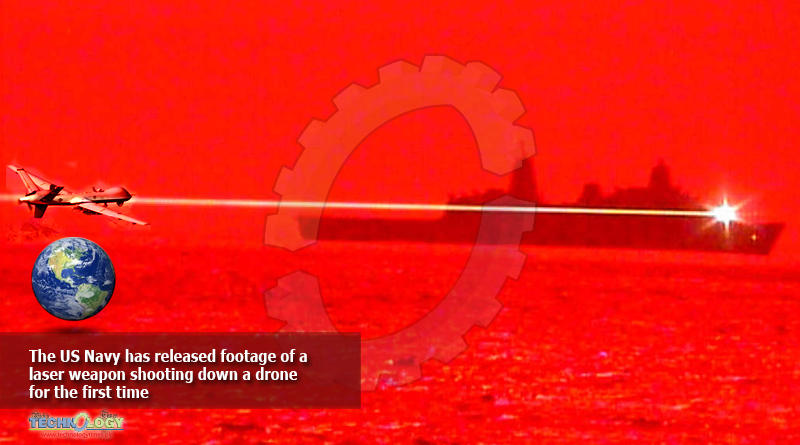Reported earlier that use of laser weapon could protect carrier groups from long-range missiles fired by potential enemies like China

A laser weapon capable of shooting down flying drones has been deployed for the very first time by the US Navy, though only for demonstration purposes. Until now, many questions had lingered over whether laser-based weaponry would ever become an effective tool in modern warfare, some of which have now been answered by official footage of the event.
Installed aboard the USS Portland, the 150-kilowatt-class Technology Maturation Laser Weapon System Demonstrator (LWSD) was used to successfully disable an unmanned aerial vehicle (UAV) on May 16, 2020, in what was the first use of a high-energy class solid-state laser weapon.
“By conducting advanced at-sea tests against UAVs and small crafts, we will gain valuable information on the capabilities of the Solid State Laser Weapons System Demonstrator against potential threats,” said US Navy Captain Karrey Sanders in a statement.
“With this new advanced capability, we are redefining war at sea for the Navy.”
Developed by Northrup Grumman, the LWSD is intended to be installed on the Navy’s amphibious ships and is part of a range of laser weapons that the US military hopes to deploy in the near future.
The Navy says its “ships face an increasing number of threats in conducting their missions, including UAVs, armed small boats, and adversary intelligence, surveillance and reconnaissance systems,” hence the need for weapons capable of eliminating these threats.
It has even been reported that the use of laser weapons such as the LWSD could one day protect carrier groups from long-range missiles fired by potential enemies like China. While on-board missiles would be outnumbered by those coming from a land-based barrage, laser weapons could allow for unlimited ammunition, thereby removing the danger of being outgunned.
Originally published at IFLScience
